
The Master said, “The scholar who cherishes the love of comfort is not fit to be deemed a scholar.”
— The Analects of Confucius, Book 14
Surely one of the radiant gates of the Writer’s Pantheon—one of the earthly points of entry where the literary arts in their elemental state have been conveyed to humankind—is located in China. A writing system emerged as one of the earliest and most powerful expressions of the Chinese civilization, a system with such an ancient legacy that even the divine queries written on ox bones and turtle shells—the Shang Dynasty “oracle bones” dating back at least three-thousand years—are recent in comparison with evidence of proto-writing from Neolithic China. No surprise, then, that this is the land where paper and movable type were invented, and where a number of eminent members of the Writer’s Pantheon continue to influence the efforts of students, public servants, and other literary labourers.
Among those Taoist immortals, the “hsien,” who preside over China’s literary arts, Wen Chang is foremost as the lord of academic and professional composition, literacy, education, and scholarship. Wen Chang is recognized as a historical scholar, often identified as Chang Ya Tsu, whose powers of divination and mastery over the written word elevated him to the realm of the hsien, where he continues to be called upon by parents, students, and clerks to ensure successful studies, passing grades on exams, and prosperous careers. For the edification of believers, Wen Chang also conveyed his biography to scribes through spiritual writing in the late 12th century.
The deity’s name connotes “literary prosperity”, as “Wen” refers to writing, culture, and language, while “Chang” signifies good fortune and success. Wen Chang usually is depicted with an entourage of supporting deities, including Kui Xing, the patron of written examinations, and Zhu Yi or “Red Coat,” the god of luck.
Entreaties to Wen Chang in Taoist practice include offerings of paper, food, and incense. His attributes also are embodied in temples and pagodas throughout China. These multi-level pagodas, such as the Ming Dynasty Wen Chang Pagoda in the city of Beihai, are especially significant, as they reappear in miniature form in offices, study areas, and on writing desks, strategically placed to channel academic and professional success according to the architectural and spatial traditions of Feng Shui.
As architectural sites consecrated to literary success (the antithesis of the Tower of Babel, which embodies the chaotic proliferation of language and—through the Sumerian tale of Enmerkar—the ad hoc invention of writing), the Wen Chang pagodas recall the classical ars memoria, in which students of rhetoric purposefully imagined architectural structures in order to organize and memorize information. Frances Yates describes this technique in The Art of Memory:
In order to form a series of places in memory ... a building is to be remembered, as spacious and varied a one as possible, the forecourt, the living room, bedrooms and parlours, not omitting statues and other ornaments with which the rooms are decorated. The images ... to be remembered ... are then placed in imagination on the places which have been memorised in the building. This done, as soon as the memory of the facts requires to be revived, all these places are visited in turn and the various deposits demanded of their custodians.
In the nineteenth century, the classical ars memoria gained a new popularity among European students and writers alike, with poems such as Tennyson’s “The Palace of Art” describing the architecture of the imagination, and works such as Francis Fauvel-Gouraud’s Phreno-Mnemotechny; or, The Art of Memory combining classical mnemonics with the pseudo-science of phrenology. Phrenologists, of course, believed a person’s mind and character could be understood by interpreting the shape that person’s skull. In essence, the architecture of someone’s head would convey information about their personal traits, including their literary talent, amorous inclinations, and even their potential to commit murder—as though the human skull itself is an “oracle bone.”
But wait ... all of this seems way too academic. How did I get into at a meditation on phrenology? How did my list of sources get so ridiculously long? Clearly Wen Chang is at work, urging me to seek obscure sources of information, directing me to be comprehensive, inspiring me to be scholarly and erudite.
With thanks to this great lord of knowledge, I have to admit my preference for the indolent western approach to learning—the instinct that inspired William Wordsworth to proclaim: “Up! up! my friend, and quit your books”. Or, even better, I’m captivated by the haunting presence and elusive wisdom portrayed in Matthew Arnold’s “The Scholar Gipsy”:
... the Gipsy crew,
His mates, had arts to rule as they desired
The workings of men’s brains;
And they can bind them to what thoughts they will:
‘And I,’ he said, ‘the secret of their art,
When fully learn’d, will to the world impart:
But it needs Heaven-sent moments for this skill!’
So, with apologies to Wen Chang (and, for good measure, to Confucius), I will end my academic rummaging for now, quit my books, and await a full report from the Scholar Gypsy. However, for anyone with more immediate intellectual needs, whether you are writing an exam, a test for promotion, a scholarly essay, or other composition that would benefit from divine guidance, apply yourself energetically to Wen Chang, and you’ll be sure of good literary fortunes.
— The Analects of Confucius, Book 14
Surely one of the radiant gates of the Writer’s Pantheon—one of the earthly points of entry where the literary arts in their elemental state have been conveyed to humankind—is located in China. A writing system emerged as one of the earliest and most powerful expressions of the Chinese civilization, a system with such an ancient legacy that even the divine queries written on ox bones and turtle shells—the Shang Dynasty “oracle bones” dating back at least three-thousand years—are recent in comparison with evidence of proto-writing from Neolithic China. No surprise, then, that this is the land where paper and movable type were invented, and where a number of eminent members of the Writer’s Pantheon continue to influence the efforts of students, public servants, and other literary labourers.
Among those Taoist immortals, the “hsien,” who preside over China’s literary arts, Wen Chang is foremost as the lord of academic and professional composition, literacy, education, and scholarship. Wen Chang is recognized as a historical scholar, often identified as Chang Ya Tsu, whose powers of divination and mastery over the written word elevated him to the realm of the hsien, where he continues to be called upon by parents, students, and clerks to ensure successful studies, passing grades on exams, and prosperous careers. For the edification of believers, Wen Chang also conveyed his biography to scribes through spiritual writing in the late 12th century.
The deity’s name connotes “literary prosperity”, as “Wen” refers to writing, culture, and language, while “Chang” signifies good fortune and success. Wen Chang usually is depicted with an entourage of supporting deities, including Kui Xing, the patron of written examinations, and Zhu Yi or “Red Coat,” the god of luck.
Entreaties to Wen Chang in Taoist practice include offerings of paper, food, and incense. His attributes also are embodied in temples and pagodas throughout China. These multi-level pagodas, such as the Ming Dynasty Wen Chang Pagoda in the city of Beihai, are especially significant, as they reappear in miniature form in offices, study areas, and on writing desks, strategically placed to channel academic and professional success according to the architectural and spatial traditions of Feng Shui.
As architectural sites consecrated to literary success (the antithesis of the Tower of Babel, which embodies the chaotic proliferation of language and—through the Sumerian tale of Enmerkar—the ad hoc invention of writing), the Wen Chang pagodas recall the classical ars memoria, in which students of rhetoric purposefully imagined architectural structures in order to organize and memorize information. Frances Yates describes this technique in The Art of Memory:
In order to form a series of places in memory ... a building is to be remembered, as spacious and varied a one as possible, the forecourt, the living room, bedrooms and parlours, not omitting statues and other ornaments with which the rooms are decorated. The images ... to be remembered ... are then placed in imagination on the places which have been memorised in the building. This done, as soon as the memory of the facts requires to be revived, all these places are visited in turn and the various deposits demanded of their custodians.
In the nineteenth century, the classical ars memoria gained a new popularity among European students and writers alike, with poems such as Tennyson’s “The Palace of Art” describing the architecture of the imagination, and works such as Francis Fauvel-Gouraud’s Phreno-Mnemotechny; or, The Art of Memory combining classical mnemonics with the pseudo-science of phrenology. Phrenologists, of course, believed a person’s mind and character could be understood by interpreting the shape that person’s skull. In essence, the architecture of someone’s head would convey information about their personal traits, including their literary talent, amorous inclinations, and even their potential to commit murder—as though the human skull itself is an “oracle bone.”
But wait ... all of this seems way too academic. How did I get into at a meditation on phrenology? How did my list of sources get so ridiculously long? Clearly Wen Chang is at work, urging me to seek obscure sources of information, directing me to be comprehensive, inspiring me to be scholarly and erudite.
With thanks to this great lord of knowledge, I have to admit my preference for the indolent western approach to learning—the instinct that inspired William Wordsworth to proclaim: “Up! up! my friend, and quit your books”. Or, even better, I’m captivated by the haunting presence and elusive wisdom portrayed in Matthew Arnold’s “The Scholar Gipsy”:
... the Gipsy crew,
His mates, had arts to rule as they desired
The workings of men’s brains;
And they can bind them to what thoughts they will:
‘And I,’ he said, ‘the secret of their art,
When fully learn’d, will to the world impart:
But it needs Heaven-sent moments for this skill!’
So, with apologies to Wen Chang (and, for good measure, to Confucius), I will end my academic rummaging for now, quit my books, and await a full report from the Scholar Gypsy. However, for anyone with more immediate intellectual needs, whether you are writing an exam, a test for promotion, a scholarly essay, or other composition that would benefit from divine guidance, apply yourself energetically to Wen Chang, and you’ll be sure of good literary fortunes.
Sources
The Analects of Confucius. Translated by James Legge. University of Adelaide Library. (ebooks@Adelaide) (accessed 5 April 2009)
http://ebooks.adelaide.edu.au/c/confucius/
Ancient Scripts: Chinese (accessed 5 April 2009)
http://www.ancientscripts.com/chinese.html
Matthew Arnold. “The Scholar Gipsy.” (accessed 5 April 2009)
http://rpo.library.utoronto.ca/poem/107.html
Arthur Cotterell. A Dictionary of World Mythology. Oxford: Oxford University Press, 1986.
Francis Fauvel-Gouraud. Phreno-Mnemotechny; or, The Art of Memory. New York and London: Wiley and Putnam, 1845. (accessed 5 April 2009)
http://books.google.com/books?id=dawRAAAAYAAJ&printsec=titlepage&source=gbs_summary_r&cad=0
“History of Writing.” Wikipedia (accessed 5 April 2009)
http://en.wikipedia.org/wiki/History_of_writing
“Huashu.” Wikipedia (accessed 5 April 2009)
http://en.wikipedia.org/wiki/Huashu
“Invention of Paper.” Robert C. Williams Paper Museum, Georgia Tech (accessed 5 April 2009)
http://www.ipst.gatech.edu/amp/collection/museum_invention_paper.htm
“Lord Wen Chang Manifestation Anniversary.” Jave’s Religious Place (accessed 5 April 2009)
http://javewu.multiply.com/reviews/item/267
“Lord Wen Chang Wisdom-opening Mantra.” Jave’s Religious Place (accessed 5 April 2009)
http://javewu.multiply.com/journal/item/180/180
“Movable Type.” Wikipedia (accessed 5 April 2009)
http://en.wikipedia.org/wiki/Movable_type
“Oracle Bone.” Wikipedia (accessed 5 April 2009)
http://en.wikipedia.org/wiki/Oracle_bones
“Phrenology.” Wikipedia (accessed 5 April 2009)
http://en.wikipedia.org/wiki/Phrenology
“Wen-Chang.” godchecker.com (accessed 5 April 2009)
http://www.godchecker.com/pantheon/chinese-mythology.php?deity=WEN-CHANG
“Wen-chang.” Encyclopedia Mythica (accessed 5 April 2009)
http://www.pantheon.org/articles/w/wen-chang.html
“Wen Chang Pagoda.” Way OnNet Group (accessed 5 April 2009)
http://www.wayonnet.com/fengshui_articles.aspx?aid=582&m=1
William Wordsworth. “The Tables Turned.” (accessed 5 April 2009)
http://www.bartleby.com/145/ww134.html
Frances Yates. The Art of Memory. London: Routledge and Kegan Paul, 1966.
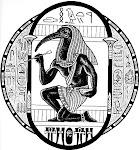
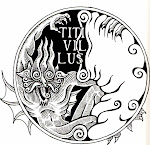
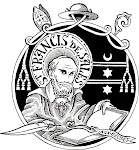
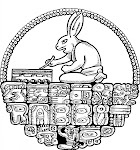
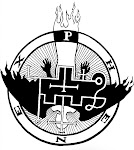
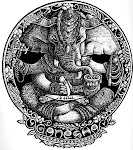

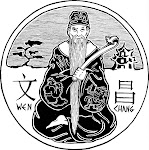
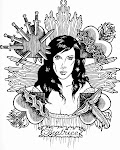
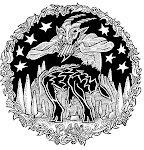
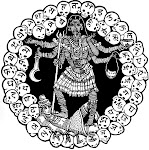
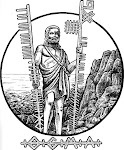
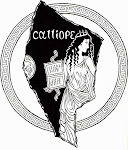
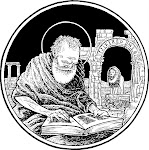
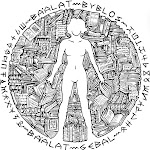

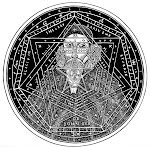

No comments:
Post a Comment